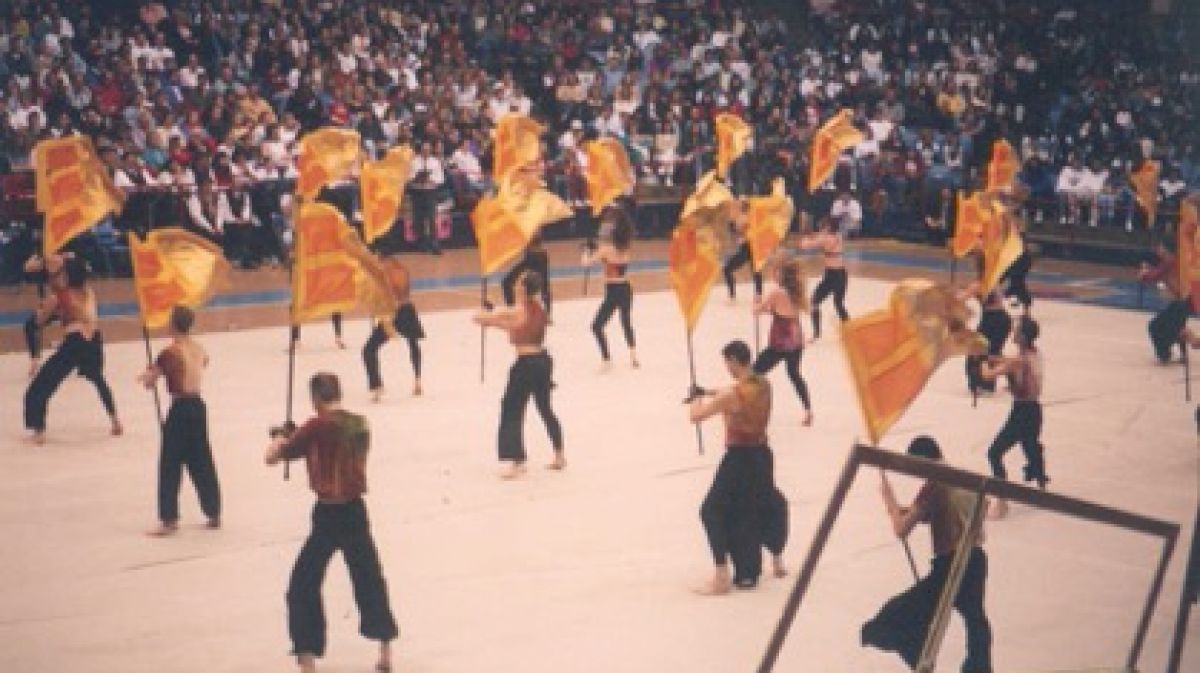Blue Devils 1996: Looking Back On WGI's Most Influential Shows Of All Time
Blue Devils 1996: Looking Back On WGI's Most Influential Shows Of All Time
In this series of articles, we are going to take a look back at some of the most influential WGI shows from the mind of one the experts in the art.

Unlock this article, live events, and more with a subscription!
Already a subscriber? Log In
Groundbreaking shows are not always the ones that finish first, but they always have a lasting impact on the direction of the sport many years after their final performance.
In this ongoing series, FloMarching has asked one of color guard's top experts, Courtney Allyson Mills, to take a look back at some of WGI's most influential shows.
Courtney Allyson Mills has taught color guard and dance at over 150 high schools and universities. A two-time WGI gold medalist with The Company and a DCI finalist with Carolina Crown, she is also the founder and facilitator of ColorguardEDU.
Blue Devils 1996
In 1996, the Blue Devils Winter Guard performed one of the highest-scoring shows of all time. With a score of 99.55 and a show that captivated the audience, the Blue Devils created an audio/visual journey that paved the way for many color guards for years to come.
The set is simple but architecturally stunning. Abstract window frames surround the floor, creating an environment that is familiar yet intriguing. The beautiful operatic soprano sounds of “Summertime” fill the arena and the same feeling of intriguing familiarity washes over the audience.
Duets find each other in the negative space to create different partnerings. Some of the duets connect, some of the duets "duel." As the beautiful melody continues, the stage begins to fill with sabres working through the blade and into the hilt — and always with movement that brings out the choreographic nature of the equipment. The feeling is sultry, fluid, and feminine.
Rifles begin to file into the space and, musically, something changes. Underneath the operatic sounds of “Summertime,” a percussive quality softly sounds and then fades away. Sabres are still working in the sultry feeling already established and the rifles choreographic choice begins to change the feeling on the floor. The work is quick, strong, and masculine.
Soon the sounds of a third rendition of “Summertime” enters the space, as do the flags. This version is filled with pain, blues, and heaviness. The flag choreography mimics the sound, helping to create a new aesthetic.
All three sections of the guard are performing in harmony, to different versions of the same song. The three versions continue to overlap, audibly, sounding like someone is adjusting a radio knob to get the most clear sound. Although there are multiple sounds overlapping, as well as visual ideas, the energy never feels overwhelming. Each performer commits to his or her version of "Summertime" until the entire floor is taken over by one sound and one piece of equipment.
Suddenly a funky, percussive, Latin version of “Summertime” takes over. The nuance on the floor shifts to unify the guard in the same stylistic idea for the first time since the show began. The entire color guard presents a strong and energetic flag feature. The energy in the space is over the top, as the cast uses an enormous amount of space to fulfill the sonic responsibility.
Just as sudden as the flag feature begins, it ends. The music then begins to change back into the other versions of “Summertime” and the performers begin to disperse from their unified flag block. As they scatter, they pick up different qualities within the soundtrack and fill the floor with motion.
To finish the show, the funky “Summertime” reappears and the performers fill the space with musicality and energy. In the very last moments, the guard finds itself sitting on the floor, looking out at the audience, as a duet moves toward each other and finishes with a passionate embrace. The sonic idea, to take three versions of the same song and align them to three different visual ideas made for an epic moment in WGI history.
By Courtney Allyson Mills